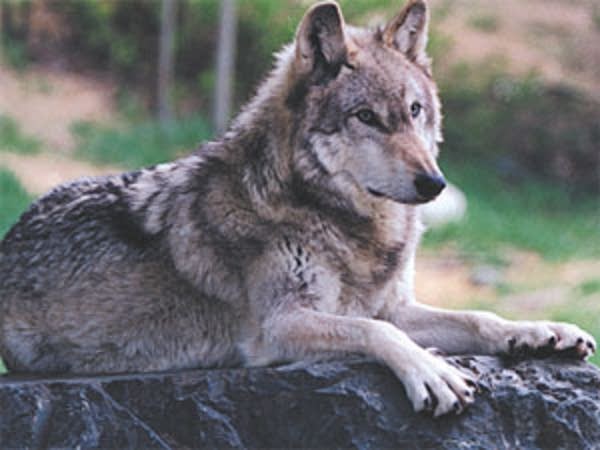Farmers say relisting wolves means losses
Go Deeper.
Create an account or log in to save stories.
Like this?
Thanks for liking this story! We have added it to a list of your favorite stories.

Late fall is a busy time of year for Chuck Becker. He runs 240 cows on pasture in Wadena County, where forests begin to give way to farmland. In the fall, the cattle are rounded up and calves are sold.
On a bright, crisp fall morning, Becker leans on a gate and relates a litany of attacks on his cattle.
"Problems range from cattle being run through fences, to cattle being crippled, legs broken, being eaten alive," said Becker. "One time we had a herd of cows chased by wolves in the night. Six of those cows aborted their calves."
"If you don't take care of yourself, nobody is going to help you. That's the bottom line."
Becker says that means thousands of dollars in lost profit.
Turn Up Your Support
MPR News helps you turn down the noise and build shared understanding. Turn up your support for this public resource and keep trusted journalism accessible to all.
He's been reimbursed by the state eight times for animals killed by wolves. To get paid for an animal, the farmer must find the carcass and have proof it was killed by wolves.
A state official says about 80 farmers get paid every year for livestock killed by wolves. Farmers and ranchers are not reimbursed for injured or missing animals.
Under the Minnesota Wolf Management plan, Chuck Becker was allowed to shoot or trap wolves.
Now that the wolf is back on the endangered species list, he says there's nothing he can do to protect his cattle. At least nothing legal.
"That law makes good honest hardworking individuals into criminals, I guess is a good way to put it," said Becker. "If you don't take care of yourself, nobody is going to help you. That's the bottom line."
If cattle are killed the farmer can call in federal trappers to kill the wolves.

Most farmers and ranchers say that response is often too late. The wolf might have moved on by the time the trapper gets there.
No one will admit to illegally shooting wolves, but everyone claims to know someone else who used the shoot, shovel and shut up solution to a wolf problem.
It's not clear how often farmers and ranchers take the law into their own hands, according to Minnesota Department of Natural Resources Wolf Management Specialist Dan Stark.
"We know that illegal shooting occurs," said Stark, "but there's no evidence it has any influence on the overall population. And it's one of those things where it's very hard to get at an overall number."
During the 18 months the wolf was off the protected list in Minnesota, Stark says 11 wolves were shot legally. He says there was not a large increase in the number of wolves legally killed after the wolf was delisted.

Stark says the Minnesota Wolf Management plan was working well. He acknowledges farmers and ranchers are frustrated the plan was put on hold.
Stark says he knows there are farmers and ranchers who don't report wolf attacks. Tim Nolte counts himself among that group. Nolte has a dairy and beef herd near Sebeka, Minn. He says wolves paid his farm a visit a few days ago. "We have 270 calves," Nolte explained. "We wake up in the morning and they're scattered a mile-and-a-half in every direction. Calves are just winded like you wouldn't believe. Fences are tore out, fences are tore in."
Three calves are still missing and Nolte says he found no trace of them.
"It's like the animal never existed. That's frustrating too," he said. "You have to have a carcass to do any complaining. We got tracks on the road. Where's your proof? Who do you call? History Channel for UFO files? I don't know. That's what it feels like."
Nolte believes there are more wolves moving into his area. Last fall he hit and killed one with his truck while driving down the highway.
While farmers are convinced the wolf population is expanding, the DNR says the population is stable and the wolves in Wadena County are most likely single animals moving through the area looking for new territory.

The most recent population survey estimated nearly 3,000 wolves now live in Minnesota.
Tim Nolte says the first time he saw a wolf near his farm it was exciting to see the powerful animal in the wild. But he says he quickly learned every time a wolf comes through, it costs him money.
Like many of his neighbors, Tim Nolte is a bit cynical about the future of wolf management in cattle country.
"As long as it's just a rancher or farmer problem it's going to be tough," Nolte said. "If the wolves moved into populated areas and started taking more pets that would get us more support. Lord knows little Fluffy has more rights than an $800 steer calf."
Now that the wolf is back on the endangered species list the Minnesota wolf management plan is on hold.
It's unclear how long it will take to resolve the legal issues that put the wolf back on the endangered species list.



